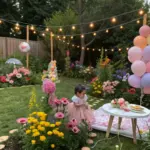8. Sedum: Rock Garden Wonders

If you’ve ever wanted to add a touch of modern elegance to your garden without breaking a sweat, sedum is your new best friend. These hardy plants are like the ultimate low-maintenance companions, thriving in places where other plants might throw in the towel. I’ll never forget the first time I planted sedum in a rocky corner of my yard—it turned what was once a barren eyesore into a lush, architectural masterpiece. Let’s explore how sedum can add structure to your garden, pair beautifully with succulents, and make life easier for urban gardeners.
How Sedum Adds Architectural Interest to Any Garden
Here’s the thing about sedum: it’s not just a plant—it’s a statement piece. With its thick, fleshy leaves and unique shapes, sedum brings a sculptural quality to gardens that few other plants can match.
One variety I absolutely adore is ‘Autumn Joy’. Its clusters of tiny flowers start out pink and gradually deepen to a rusty red as the season progresses. It’s like having a living piece of art that changes colors over time. Another favorite is ‘Dragon’s Blood’, a trailing sedum with vibrant red edges that look stunning spilling over rocks or walls.
The key to using sedum effectively? Plant it in spots where its form can shine. For example, tuck it into rock gardens, along pathways, or in containers where its cascading habit can take center stage. Trust me, once you see how sedum transforms a space, you’ll be hooked.
Combining Sedum with Succulents for Modern Aesthetics
Now, let’s talk about pairing sedum with other succulents—because when these two team up, magic happens. I once created a container garden with sedum, echeveria, and hens-and-chicks, and it became the focal point of my patio. The mix of textures, colors, and shapes was chef’s kiss.
Here’s a tip: go for contrasting colors and forms. For instance, pair the soft, rounded leaves of echeveria with the spiky, upright growth of ‘Blue Spruce’ sedum. Or, if you’re aiming for a monochromatic look, stick to shades of green and gray for a sleek, modern vibe.
Another idea? Use sedum as a ground cover around larger succulents like agave or aloe. This creates a layered effect that feels intentional and polished. Plus, both sedum and succulents thrive in similar conditions, so they’re basically made for each other.
Maintenance-Free Gardening Tips for Urban Dwellers
Let’s face it—life gets busy, especially if you’re an urban dweller juggling work, family, and everything in between. That’s why sedum is such a game-changer. It’s drought-tolerant, pest-resistant, and practically thrives on neglect.
One of my biggest lessons? Don’t overwater sedum! I learned this the hard way after accidentally drowning a few plants early on. These guys prefer well-draining soil and infrequent watering, making them perfect for rooftop gardens, balconies, or even vertical planters.
For urban spaces, consider planting sedum in containers or raised beds. Not only does this save space, but it also gives you the flexibility to move them around as needed. And here’s a pro tip: use gravel or sand in your soil mix to mimic their natural habitat. It’s like giving them a little slice of home.
Alright, before we wrap this up, here’s a little teaser: Up next, we’re diving into hollyhocks, the towering beauties that add drama and height to any garden. Want to know how to grow them against fences or walls and style them for events? Click the next button below to find out! 🌼









GIPHY App Key not set. Please check settings